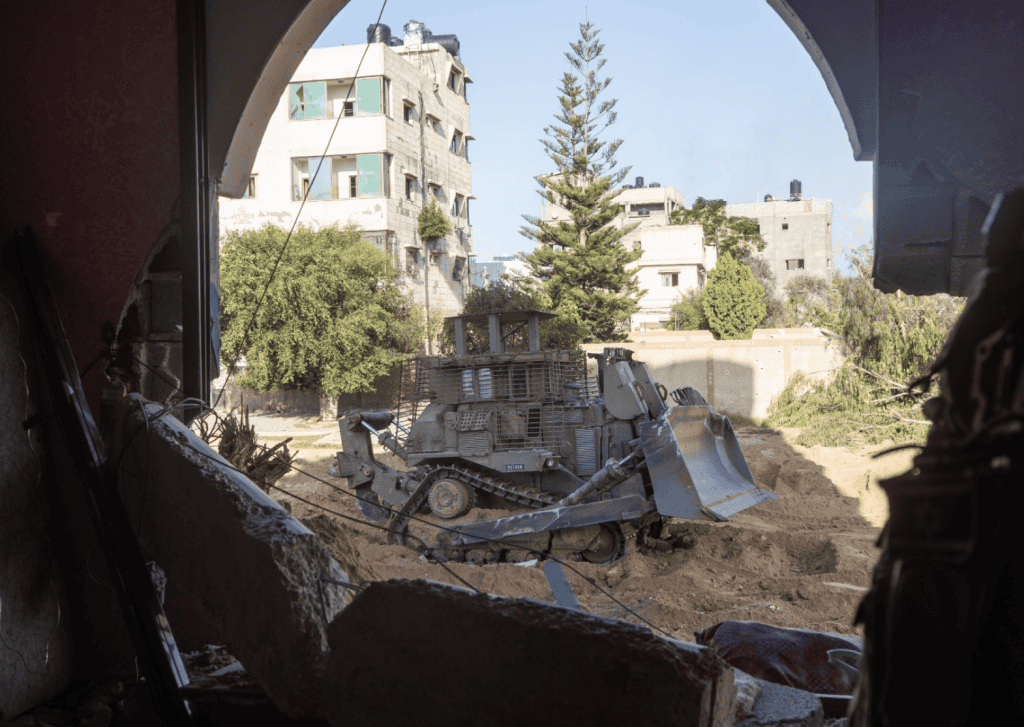
Israeli Prime Minister Benjamin Netanyahu met Thursday with members of Israel’s wartime cabinet, and together they hosted US National Security Advisor Jake Sullivan in Tel Aviv at the Kirya, where Israel’s Defense Ministry is located. “The sides discussed the continuation of the war until victory and the achieving of the common goals, first and foremost the elimination of Hamas, the release of the hostages, dismantling Hamas’s military capabilities and the end of its rule in Gaza,” a statement from the Prime Minister’s Office said.
The meeting comes ahead of an expected visit by US Secretary of Defense Lloyd Austin to Bahrain, Qatar and Israel. US Central Command head General Michael Erik Kurilla was also in the region this week, visiting Egypt and Jordan on December 11 and 12. “This visit provided a deeper understanding of the security concerns of two key partners and allowed me to see the region through our partners’ eyes,” he said.
The high-level meetings come as the Gaza war nears the end of its tenth week. IDF forces fought in Khan Yunis in southern Gaza as well as in Shujaiya and Jabalya in northern Gaza. In contrast to the first week of Israel’s renewed operations following the pause, the IDF has not said that operations expanded into any new areas this week. Instead, these three battles have been the focus. The IDF said on December 14 that it is involved in “close-quarters combat” in these areas. In one area, they “conducted searches in a central operating site for Hamas’ Shujaiya Battalion located inside a school compound,” the IDF said. “Furthermore, IDF special forces conducted targeted raids on a number of locations in the area of Khan Yunis where they located weapons, grenades, and Kalashnikov rifles. The forces destroyed two tunnel shafts, a rocket launching pit and a weapons storage facility,” the IDF also noted.
In northern Gaza, the IDF said that seventy terrorists surrendered at Kamal Adwan Hospital. The IDF added: “Additionally, during engagements with terrorists in the area of the hospital, a number of terrorists were killed by IDF troops.” This illustrates another case of Hamas being accused of using medical facilities for cover. Similar incidents unfolded near Shifa and Rantisi hospitals near Gaza City. The IDF has put out infographics and statements about this issue throughout the conflict.
IDF spokesperson Rear Admiral Daniel Hagari also revealed that the IDF had carried out a recent special operation against terrorists in the tunnels under Gaza. “The operation took place during the past days, targeting terrorists inside Hamas tunnels. Our soldiers planted explosives in an underground tunnel, identified the terrorists using cameras, and eliminated several terrorists in the incident,” he said.
Hiding underground while using the civilians above them as human shields is a method of choice routinely utilized by Hamas terrorists and their leaders, in particular. “We have new combat methods that we will deploy to kill terrorists. We will enter, plant explosives in locations we know terrorists frequent, and will wait for the right moment to kill them underground. The terrorists won’t be safe underground,” Hagari said. Israel has found more than 800 tunnel shafts in Gaza since the operation began.
The battles in Gaza took place amid a new poll which indicated increasing support for Hamas in the West Bank. Israel has carried out numerous raids in the West Bank against Hamas activists since Hamas attacked Israel from Gaza on October 7. Hagari said on December 14 that “we are conducting dozens of operations in the heart of refugee camps across the region – arresting wanted individuals, foiling attacks, and seizing many weapons. IDF forces, alongside Border Police and the ISA, completed a comprehensive brigade operation today in the Jenin refugee camp.” With activity from groups like Palestinian Islamic Jihad combined with eroding Palestinian Authority control, Jenin has posed a challenge to Israel over the last year.
Meanwhile in the north, Hezbollah fired rockets at Israel and attempted to launch an anti-tank missile toward the northern Galilee community of Shtula. The IDF responded in several areas to Hezbollah threats, including using tanks to carry out strikes. The IDF also revealed that one in five Hezbollah rockets fired at Israel since October 7 has fallen inside Lebanon.







